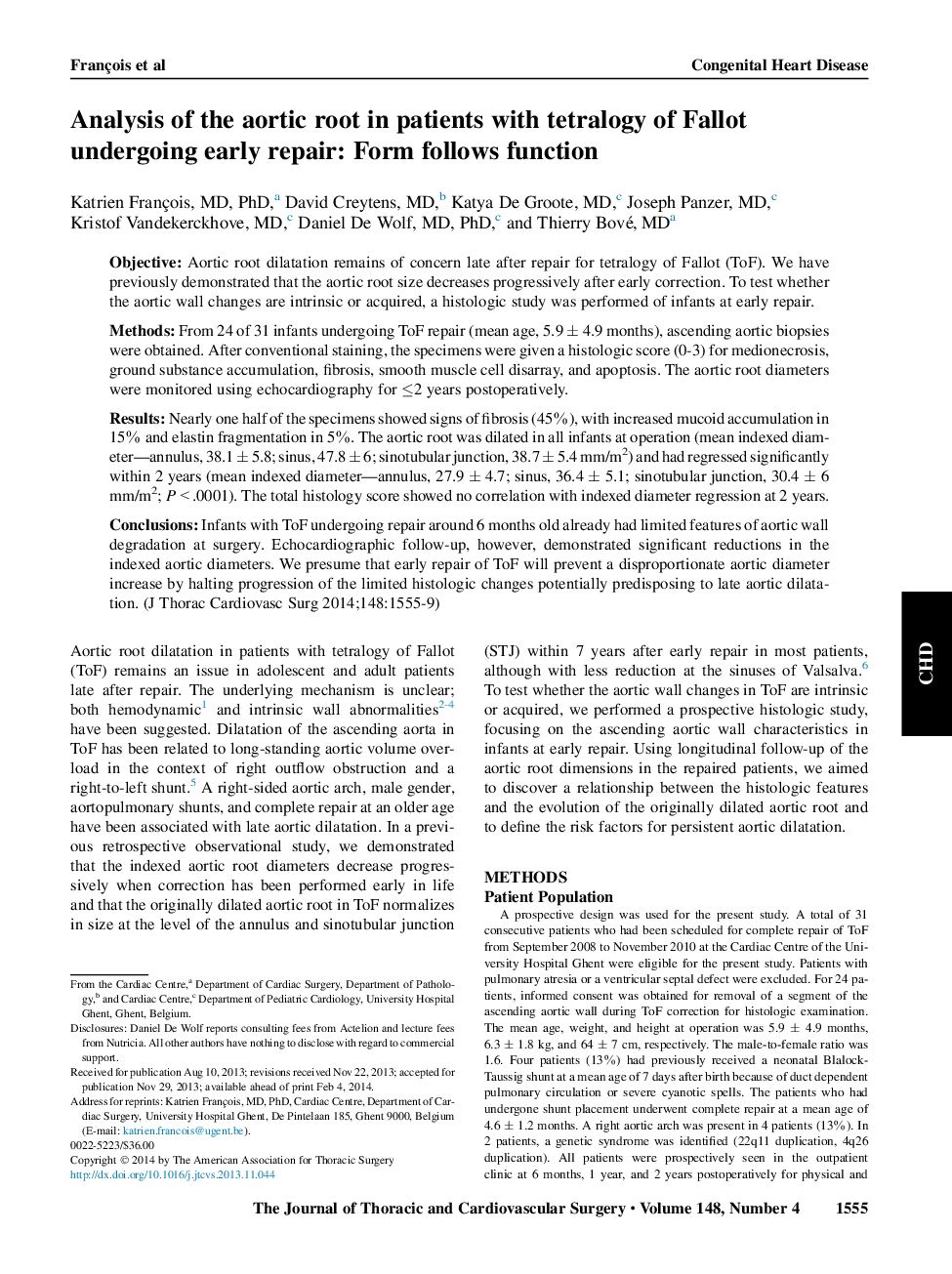| Article ID | Journal | Published Year | Pages | File Type |
|---|---|---|---|---|
| 2980419 | The Journal of Thoracic and Cardiovascular Surgery | 2014 | 5 Pages |
ObjectiveAortic root dilatation remains of concern late after repair for tetralogy of Fallot (ToF). We have previously demonstrated that the aortic root size decreases progressively after early correction. To test whether the aortic wall changes are intrinsic or acquired, a histologic study was performed of infants at early repair.MethodsFrom 24 of 31 infants undergoing ToF repair (mean age, 5.9 ± 4.9 months), ascending aortic biopsies were obtained. After conventional staining, the specimens were given a histologic score (0-3) for medionecrosis, ground substance accumulation, fibrosis, smooth muscle cell disarray, and apoptosis. The aortic root diameters were monitored using echocardiography for ≤2 years postoperatively.ResultsNearly one half of the specimens showed signs of fibrosis (45%), with increased mucoid accumulation in 15% and elastin fragmentation in 5%. The aortic root was dilated in all infants at operation (mean indexed diameter—annulus, 38.1 ± 5.8; sinus, 47.8 ± 6; sinotubular junction, 38.7 ± 5.4 mm/m2) and had regressed significantly within 2 years (mean indexed diameter—annulus, 27.9 ± 4.7; sinus, 36.4 ± 5.1; sinotubular junction, 30.4 ± 6 mm/m2; P < .0001). The total histology score showed no correlation with indexed diameter regression at 2 years.ConclusionsInfants with ToF undergoing repair around 6 months old already had limited features of aortic wall degradation at surgery. Echocardiographic follow-up, however, demonstrated significant reductions in the indexed aortic diameters. We presume that early repair of ToF will prevent a disproportionate aortic diameter increase by halting progression of the limited histologic changes potentially predisposing to late aortic dilatation.
